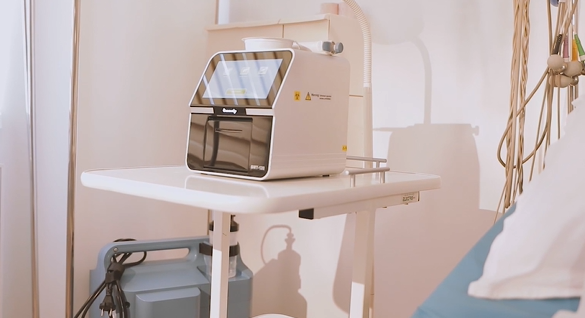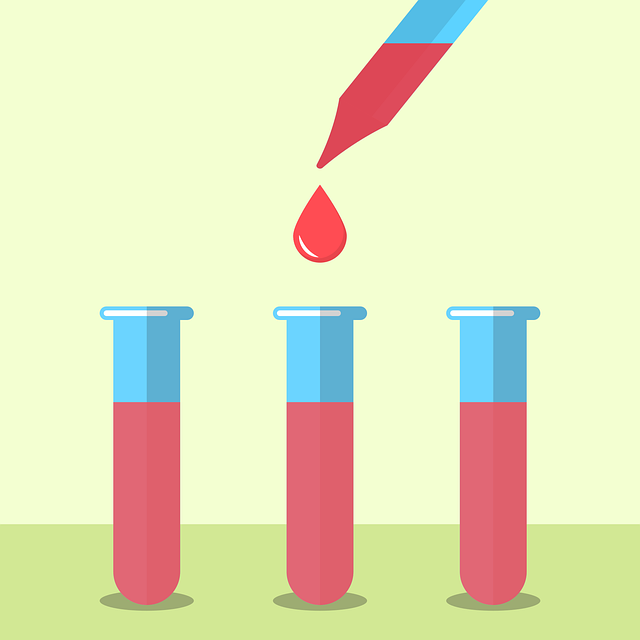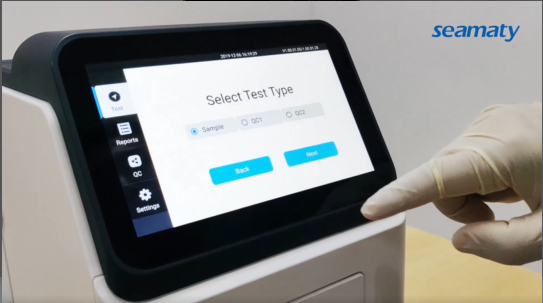Since Skeggs first introduced the principle of a clinical biochemical analyzer in the 1950s, a variety of biochemical automatic biochemical analyzers and diagnostic reagents have evolved with the development of science and technology, especially medical science.

According to the different structural principles of the instruments, they can be divided into four categories: flow-through biochemical analyzers, discrete biochemical analyzers, centrifugal biochemical analyzers and dry biochemical analyzers.
A. Flow-through biochemical analyzer
The chemical reaction of each sample to be tested and the reagents mixed with the same measurement item is completed in the same pipe by the flow process.
Flow-through biochemical analyzer can be generally divided into air segmentation system type and non-segmentation system type.
The air segmentation system means that each sample, reagent and mixed reaction solution in the inlet tube are separated by a small section of air. In contrast, non-segmented systems rely on reagent blanks or buffers to space the reaction solution for each sample.
Flowing biochemical analyzer composition
Among the Flow-through biochemical analyzer, the air segmentation system is the most common and the more typical. The whole instrument is composed of sample tray, proportional pump, mixing tube, dialyzer, thermostat, colorimeter and recorder.
Advantages of flow-through biochemical analyzer
The instrument automatically aspirates specimens and reagents, eliminating manual contamination. The biochemical analyzer can automatically calculate the concentration value and incubate automatically.
Disadvantages of flow-through biochemical analyzer
Only one specimen can be measured at the same time; slow testing speed; incubation tray needs manual cleaning.
B. Discrete biochemical analyzer
The discrete biochemistry analyzer is programmed in a manual manner and replaces manual operation with rhythmic mechanical operation. Each link of the discrete biochemical analyzer is connected by transfer belt and operated in sequence.
The discrete biochemistry analyzer is fast, with little cross-contamination and many test items.
What is the difference between a discrete biochemistry analyzer and a flow-through biochemistry analyzer?
The main difference in structure between discrete biochemistry analyzer and pipeline biochemistry analyzer is that the former individual samples and reagents react in their own test tubes, while the latter reacts in the same pipeline.
C Centrifugal biochemical analyzer
Centrifugal biochemical analyzer is a kind of biochemical analyzer developed after 1969. It is a chemical reactor mounted in the rotor position of a centrifuge. The sample and reagents are first placed separately in the circular reactor. When the centrifuge is started, the sample and reagents inside the disc are mixed with each other by centrifugal force and react. Finally, they flow into the colorimetric tank on the outer ring of the disc and are detected by the colorimeter.
D Dry biochemical analyzer
The Dry Chemistry Analyzer was introduced in the 1980's. The Eastman Kodak Company was the first to create a dry reagent for the determination of blood glucose, urea, protein, cholesterol, etc. in serum with its superb chemical process.
When a quantitative amount of serum was added, a color reaction was generated in front of the dry tablet and quantified by reflectance photometry. This type of method completely eliminates liquid reagents, so it is called dry chemical method.



